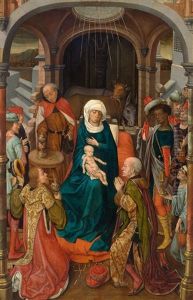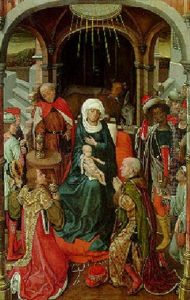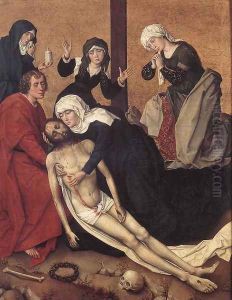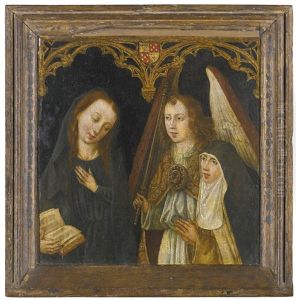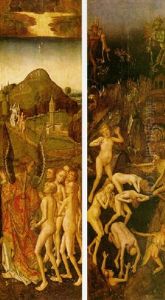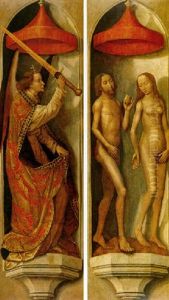Vrancke van der Stockt Paintings
Vrancke van der Stockt was a prominent Flemish painter and illuminator, active during the latter half of the 15th century, during the Northern Renaissance. Born around 1420 in Brussels, which was then part of the Duchy of Brabant, he became an influential figure in the artistic circles of his time. Though less well-known than contemporaries like Rogier van der Weyden, van der Stockt nonetheless contributed significantly to the development of Flemish art.
Van der Stockt was the son of the painter Abrahm van der Stockt, who we can surmise was his first teacher. Vrancke became a master in the Brussels painters' guild in 1445 and took over the workshop from his father in 1449. His works show a strong influence from Rogier van der Weyden, under whom it is speculated he may have studied or worked. Like many painters of his time, van der Stockt's oeuvre includes religious panels, altarpieces, and commissioned portraits.
Among his notable works is the 'Redemption Triptych', currently housed in the Museo del Prado in Madrid. This triptych displays the characteristic features of van der Stockt's style: a refined use of color, attention to detail, and a clear narrative structure within his compositions. His work often exhibited the use of rich, vibrant colors and intricate detailing that was typical of the Flemish school of painting.
Vrancke van der Stockt was also active as an illuminator, and his contribution to manuscript illumination reflects the blend of innovation and adherence to tradition that marked the period's art. His illuminations are known for their vivid colors and intricate decoration, often incorporating ornamental borders and elaborate initials.
Little is known about van der Stockt's personal life, including the details of his training and his interactions with other artists of the time. However, his lasting influence can be seen in the works of artists who followed him, indicating that his workshop was a center of artistic activity in Brussels. Van der Stockt's death in 1495 marked the end of an era for the Brussels school of painting, which he had helped to define and elevate during his lifetime.
